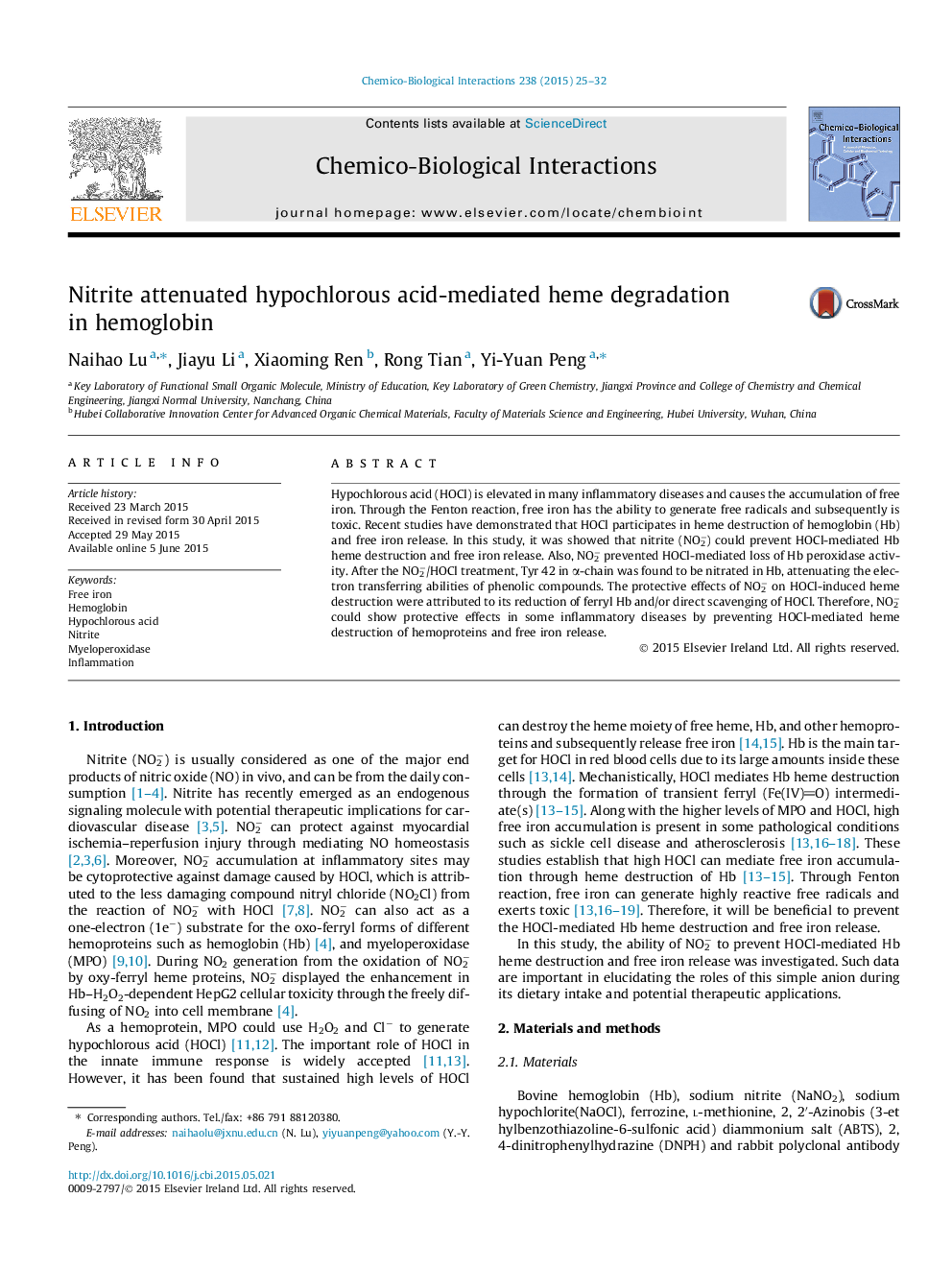| Article ID | Journal | Published Year | Pages | File Type |
|---|---|---|---|---|
| 5847811 | Chemico-Biological Interactions | 2015 | 8 Pages |
Abstract
Hypochlorous acid (HOCl) is elevated in many inflammatory diseases and causes the accumulation of free iron. Through the Fenton reaction, free iron has the ability to generate free radicals and subsequently is toxic. Recent studies have demonstrated that HOCl participates in heme destruction of hemoglobin (Hb) and free iron release. In this study, it was showed that nitrite (NO2â) could prevent HOCl-mediated Hb heme destruction and free iron release. Also, NO2â prevented HOCl-mediated loss of Hb peroxidase activity. After the NO2â/HOCl treatment, Tyr 42 in α-chain was found to be nitrated in Hb, attenuating the electron transferring abilities of phenolic compounds. The protective effects of NO2â on HOCl-induced heme destruction were attributed to its reduction of ferryl Hb and/or direct scavenging of HOCl. Therefore, NO2â could show protective effects in some inflammatory diseases by preventing HOCl-mediated heme destruction of hemoproteins and free iron release.
Related Topics
Life Sciences
Environmental Science
Health, Toxicology and Mutagenesis
Authors
Naihao Lu, Jiayu Li, Xiaoming Ren, Rong Tian, Yi-Yuan Peng,
